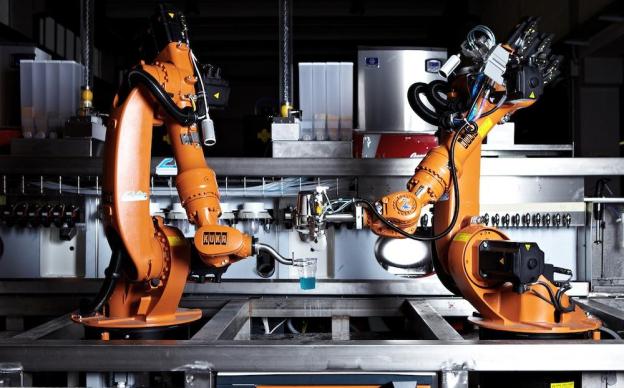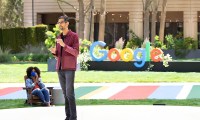
Google I/O is all about the latest in what developers are capable of building next, so it’s no surprise that even the bartenders serving up cocktails are a product of some complex computing. No, these guys didn’t need to take some bartending class or wait until they’re 18 years of age. The Makr Shakr robot, unveiled today at Google I/O, will mix the perfect cocktail – provided you give it the desired recipe.
Designed by MIT’s Senseable City Lab in partnership with Coca-Cola and Bacardi, the Makr Shakr is a series of large, orange arms designed to put on a show while it’s making your drinks. The robot, controlled by a smartphone app, will crowdsource drink requests and shake up liquor combinations of the guest’s choice. This means visitors can choose a classic Bacardi and Coke, or try something a little stranger, like Diet Coke, coconut, rum, and lime. Odd. Makr Shakr offers up to 100 types of flavors from fruit juices, liquor, syrups, soda, and more. Its arms, modeled after ballet dancer Roberto Bolle, are also supposed to replicate some very intricate human movements, from shaking up the mixer to slicing lemon and lime wedges.

Makr Shakr may not be your new favorite neighborhood bartender or give you an extra shot for being awesome, but it sure is fun to watch. Just give it a black vest to add that speakeasy bartender attire.



